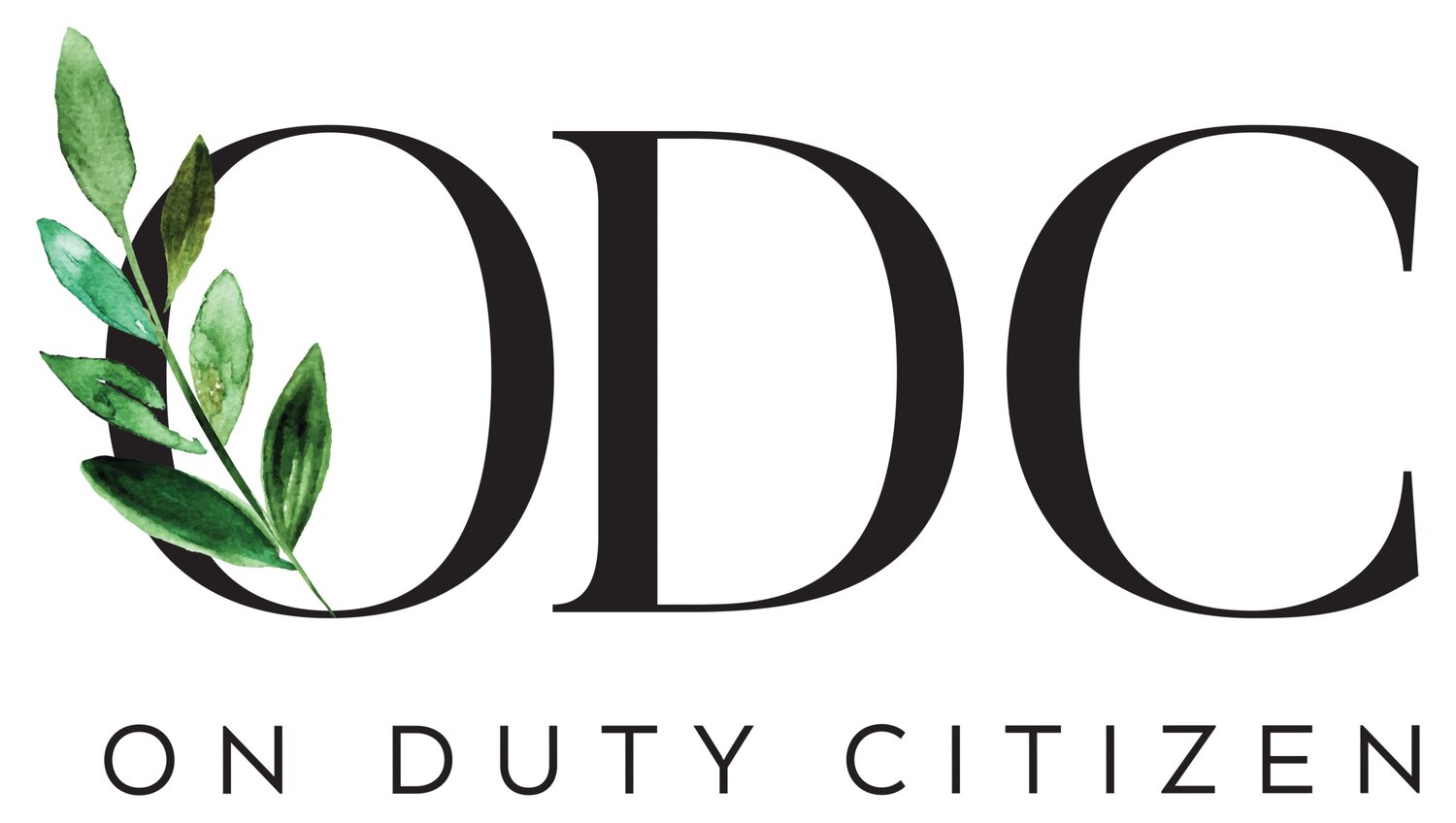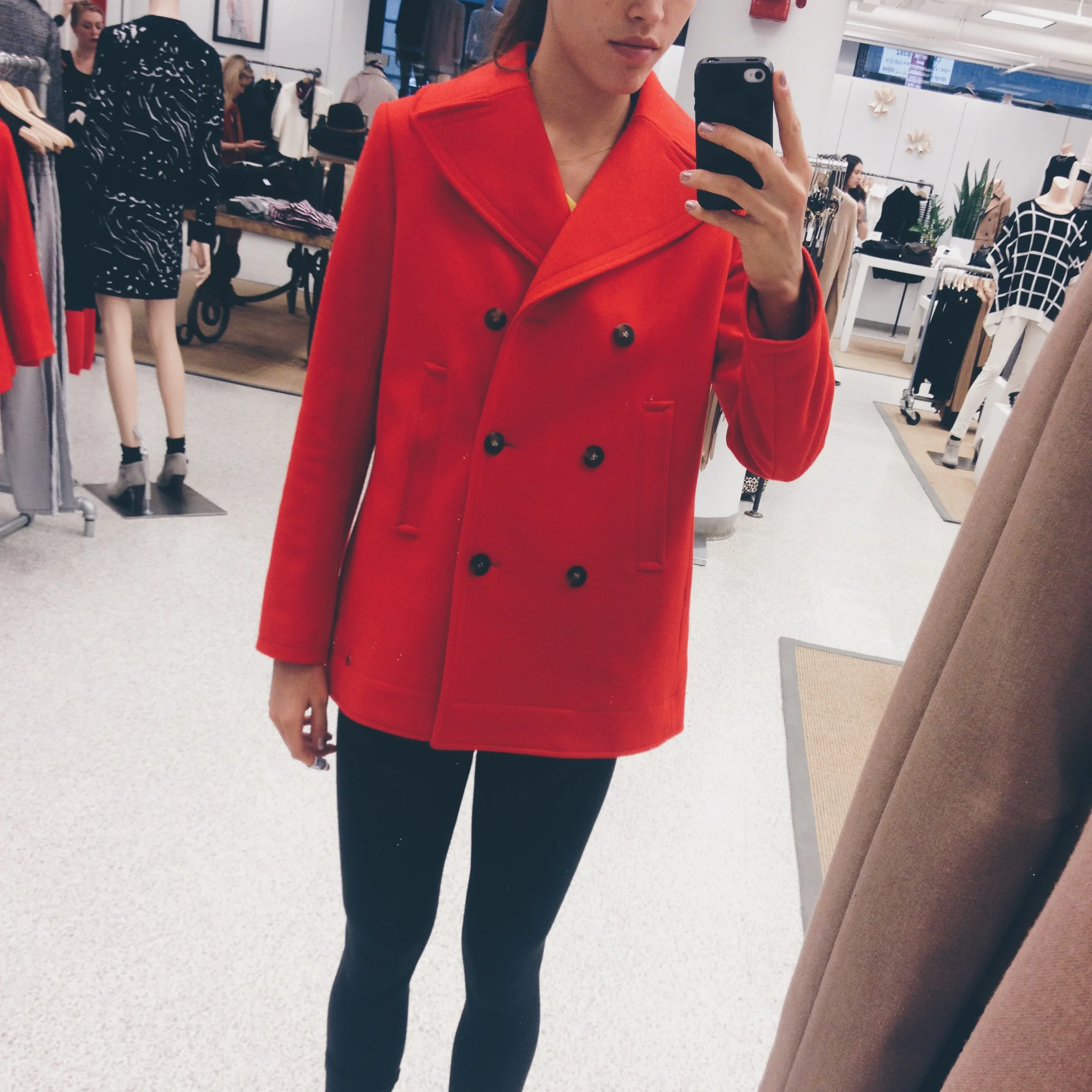Being in the fashion industry exposes you to the newest and best clothing that naturally has the effect of making one obsessed with always being on trend. My parents, both having worked in the business industries luckily kept me in reign from my sporadic shopping sprees with constant reminders of saving my income for tax season and investing whenever I could. In the beginning of my career, especially when I had no experience of saving or paying taxes, I would spend hours on end on every site, searching for the latest and newest trends and how I could get my hands on them, sometimes at whatever cost.
My $550 pea coat that I only wore a handful of times
Prime example of said obsessions was a few years back when I was looking for another new fall coat. At that moment, colorful pea coats were the thing everyone had. It would take over my life, mindlessly saving new items in my cart, cross-examining the prices and styles on different sites, asking my boyfriend for his opinions on which overpriced coat he thought looked best... He would tell me it wouldn’t be practical to buy a colorful coat that although was nice now, would naturally go out of style by next season, which I later learned to be true. (That red pea coat I bought on the right has only been worn a handful of times).
While most trends start from the high-end designers after each fashion week season, the industry has taken on a new approach to selling trends with a term known as fast fashion. Fast fashion gets you cheaper versions of designer goods that are available almost simultaneously as the designers release their newest collections. The time it takes for these fast fashion behemoths, Zara, H&M, and Forever21 standing out, to copy and reproduce these pieces is incredibly fast (hence the name). It makes us able to be instantly on trend affordably. As Elizabeth Cline states in her book Overdressed: The Shockingly High Cost of Cheap Fashion, these fast fashion companies are receiving new deliveries to their stores daily, some getting up to 400 new styles per week on their websites. This makes us feel like we have to buy continuously to stay stylish and look like we fit in.
Trends however as I’m sure you know come and go. It’s in the industry’s best interest for us as consumers to buy into and become obsessed with these trends, just as I had. Naturally, consumption is a necessity for our economy. If you look at the history of fashion seasons and how we buy clothes, you’ll notice that the amount of seasons and new trends have dramatically increased. Shannon Whitehead, founder of Factory45, a sustainable start-up accelerator program notes in her Huffington Post article that there are now up to 52 “micro-seasons”! What was once a magical show, sometimes showcasing such avant-garde pieces that would be considered art more than everyday clothing has now become a driving force of consumerism available for everyone, not just the fashion folk.
Supply and demand are on the rise and our perceptions of what clothes should cost has become extremely skewed thanks to these companies overproducing cheaply made fashion. We now expect a t shirt to cost $10 or less and are shocked if it’s any more, even if it’s made ethically and sustainably with organic fabrics. We buy more of these cheap clothes that naturally feel way more disposable to us. The problem is that there isn't enough room for all the accumulating waste and something needs to change. The True Cost movie is an incredible documentary that helps shed light on the true cost of what goes into making your clothing and why prices have become so low.
As consumers, we have to find the middle ground or shift the demand. The market is oversaturated with items of insufficient quality and with an overabundance of trends that last mere weeks. Whether it’s a thousand-dollar coat or an H&M replica, we need to realize the difference between what we want to buy and what we’re told we want to buy. What will last in our closets for a micro-minute and what will be there for many years. Do I think it’s worth an investment of a few hundred dollars for a good, stylish coat that is made of good quality to buy? Most definitely! Buy less and buy better! Do I think it’s worth it to buy a thousand-dollar coat with a crazy pattern that happens to be a popular trend at the moment? No, definitely not because I know I'll only end up wearing it a few times. What about buying lots of less expensive coats that are made poorly with cheap materials? I don’t want to throw out or give away any more clothes, especially knowing how harmful the fashion industry is to our environment, so no.
Think about what you’re buying, the investment you can make in the quality and how often you'll wear it. Take a deep look at your closet and look at what you wear the most and try to understand why you love it so much. It’s likely not something you bought on a whim in order to try and fit in. Rather, it’s probably expensive enough that the quality lasts but something you can wear anything. We need to buy less and we need to buy better. Instead of low quality/high volume, think about high quality and low volume when you next decide to go shopping. It may take years, if we're lucky enough for it to come to this but if the demand is shifted from cheaply made clothes to higher quality sustainably made items, perhaps we as consumers can shift the market and make ethical, organic clothing an option for everyone to buy.
Here I am gathering some clothes I had bought within that past year that I no longer wore. Although it'll be much more useful if it reaches someone in need, I could have definitely saved money and know that that much more clothing wouldn't possibly end up in a landfill.
Credit: HuffingtonPost.com
Credit: Truecostmovie.com
Image credit: Truecostmovie.com







